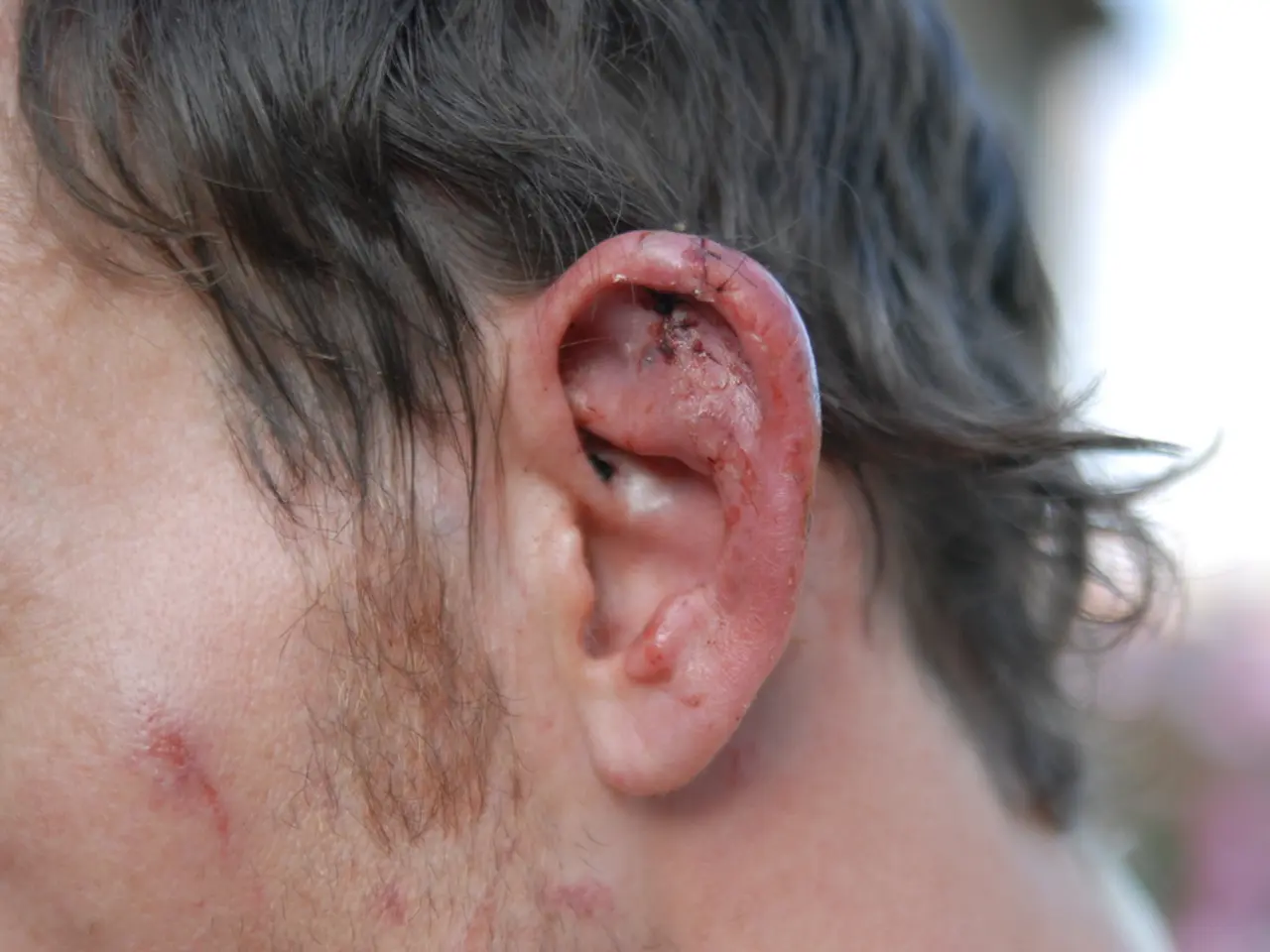Hear, hear! Safety, potential risks, and additional insights on using hydrogen peroxide in the ear
=====================================================================================
Hydrogen peroxide ear drops have gained popularity as a simple and effective solution for the removal of excess earwax. These drops work by releasing oxygen bubbles that help break down hardened earwax, softening it so it can naturally expel from the ear canal.
However, it's essential to use hydrogen peroxide ear drops correctly to avoid potential complications. They should not be used if you have a history of ear infections, a perforated or damaged eardrum, or ear tubes, as introducing liquids can cause pain, dizziness, or worsen infections. The solution should also be at body temperature to avoid discomfort.
A typical application involves filling a bulb syringe with a mixture of 50/50 hydrogen peroxide and warm water, applying a few drops in each ear twice daily for up to 4 days. Afterwards, the ear can be flushed with warm water or a bulb syringe to remove excess hydrogen peroxide and earwax.
Safer alternatives for earwax removal and clogged ears include saline or saline-based ear drops, carbamide peroxide ear drops, natural oils such as olive oil or almond oil, warm water irrigation, and professional ear cleaning. Consulting a healthcare professional is safest, especially if symptoms persist or there is ear pain, infection, or hearing loss.
It's important to avoid cotton swabs, hairpins, or other objects inside the ear canal as they can push wax deeper and cause damage. If symptoms worsen or do not improve, it's recommended to seek medical attention to avoid complications.
In summary, hydrogen peroxide drops can be a safe and effective first step for mild earwax removal if used cautiously and appropriately. However, safer and gentler alternatives are available, and professional care is recommended if there is any uncertainty or underlying ear issues. Always remember to read and follow the instructions on the packaging, and consult a doctor if you have any concerns.
[1] Mayo Clinic. (2020). Earwax removal. [online] Available at: https://www.mayoclinic.org/tests-procedures/earwax-removal/about/pac-20394588
[2] American Academy of Otolaryngology—Head and Neck Surgery. (2020). Earwax removal. [online] Available at: https://www.enthealth.org/conditions/earwax-removal/
[3] Cleveland Clinic. (2021). Earwax removal. [online] Available at: https://my.clevelandclinic.org/health/treatments/17624-earwax-removal
[4] MedlinePlus. (2021). Earwax removal. [online] Available at: https://medlineplus.gov/ency/procedure/Show/15186
- Multiple sources suggest hydrogen peroxide ear drops are effective for earwax removal, creating oxygen bubbles to break down earwax.
- Care should be taken when using hydrogen peroxide ear drops to avoid complications, especially in individuals with ear infections, perforated eardrums, or ear tubes.
- Consulting a healthcare professional is always the safest option when dealing with persistent symptoms, ear pain, infection, or hearing loss.
- Safer alternatives for earwax removal and clogged ears include saline or saline-based ear drops, carbamide peroxide ear drops, natural oils, warm water irrigation, and professional ear cleaning.
- Cotton swabs, hairpins, or other objects should be avoided inside the ear canal to prevent pushing wax deeper and causing damage.
- Professional care is recommended if there's any uncertainty or underlying ear issues when dealing with earwax removal.
- Always follow the instructions on the packaging and consult a doctor if you have any concerns regarding earwax removal.
- Other chronic health conditions, such as diabetes, bipolar, colitis (ulcerative or otherwise), COPD, depression, sclerosis, chronic kidney disease, and mental health issues, aren't directly related to earwax removal but require regular medical attention and workplace wellness considerations.
- In terms of household cleaners, hydrogen peroxide can serve as a suitable alternative for bleach or other cleaning products, being safer and more environmentally friendly.
- Diet and nutrition play a crucial role in managing various chronic diseases like diabetes and mental-health conditions such as depression.
- The predictive capabilities of science in understanding and treating conditions like diabetes, multiple sclerosis, and NSCLC evolve continuously through research and therapies and treatments.
- Fitness and exercise, along with skin care and mental health therapies, help alleviate chronic diseases and promote overall health and wellness.
- AQ (air quality) is a significant factor in respiratory conditions like COPD, and steps should be taken to improve indoor air quality for better lung health.
- Eye health and hearing are often underestimated aspects of wellness that require regular check-ups, especially for individuals with conditions like COPD or diabetes.
- CBD (cannabidiol) has gained popularity as a potential treatment for various skin conditions, mental health issues, and types of depression.
- While hydrogen peroxide plays an essential role in earwax removal, it's only one piece of the puzzle in maintaining overall health and wellness, requiring diligent management of multiple chronic diseases and commitment to a balanced lifestyle.




